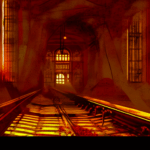The Chalk Circle Man: A Mysterious Puzzle Unfolds in Paris
In Fred Vargas’ crime novel, “The Chalk Circle Man,” a series of mysterious circles drawn in chalk appear overnight on the streets of Paris, captivating the city’s residents and sparking the curiosity of Commissaire Adamsberg. As he delves into the enigma, Adamsberg uncovers a web of secrets, deceit, and hidden desires that lead him down a path of intrigue and danger.
The Chalk Circle Mystery Begins
The story begins with the discovery of the first chalk circle on a pavement in Paris. These circles, seemingly meaningless at first, soon capture the attention of the city’s inhabitants. The circles appear overnight, drawn with precision and care, and they become a source of fascination for many. However, as more circles appear, the mystery deepens, and it becomes clear that there is more to this puzzle than meets the eye.
Commissaire Adamsberg Takes the Case
Commissaire Adamsberg, a seasoned detective known for his unconventional methods, becomes intrigued by the chalk circles and decides to investigate. As he delves deeper into the case, he discovers that the circles are not just random drawings but are connected to a series of strange and disturbing events. Adamsberg’s intuition tells him that there is a hidden message behind the circles, and he becomes determined to decipher it.
A Web of Secrets and Deceit
As Adamsberg investigates, he uncovers a web of secrets and deceit that stretches back decades. He encounters a cast of eccentric characters, each with their own motives and secrets to hide. From a retired professor obsessed with numerology to a group of friends with a dark past, everyone seems to be connected in some way to the chalk circles. Adamsberg must navigate this complex network of relationships and uncover the truth before more harm is done.
Throughout the investigation, Adamsberg’s unorthodox methods and keen intuition prove invaluable. He relies on his ability to read people and his deep understanding of human nature to uncover the truth. As the pieces of the puzzle start to come together, Adamsberg realizes that the chalk circles are not just a game but a means of communication, a way for someone to send a message without being detected.
In the midst of his investigation, Adamsberg also grapples with personal demons and a troubled past. His complex character adds depth to the story, as he wrestles with his own inner demons while trying to solve the mystery at hand.
As the tension builds and the truth is revealed, Adamsberg finds himself facing a dangerous adversary who will stop at nothing to protect their secrets. In a thrilling climax, Adamsberg must use all his wits and intuition to outsmart the culprit and bring justice to those affected by the chalk circles.
Key takeaways from “The Chalk Circle Man”:
- The power of intuition and unconventional thinking in solving complex mysteries.
- The interconnectedness of seemingly unrelated events and the importance of looking beyond the surface.
- The lasting impact of past actions and the consequences they can have on the present.
Memorable quote from “The Chalk Circle Man”:
“The world is full of people who see without looking, hear without listening, and act without thinking.”
In “The Chalk Circle Man,” Fred Vargas weaves a captivating tale of mystery and intrigue, where the seemingly innocuous chalk circles hold the key to a much larger puzzle. Through the eyes of Commissaire Adamsberg, readers are taken on a journey through the streets of Paris, uncovering secrets and unraveling a complex web of deceit. With its unique characters, atmospheric setting, and thought-provoking themes, “The Chalk Circle Man” is a must-read for fans of crime fiction and those who enjoy a good puzzle.












